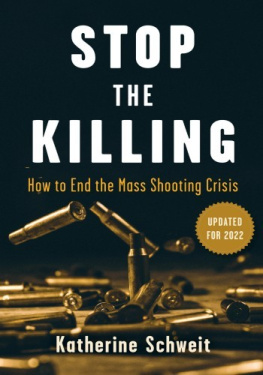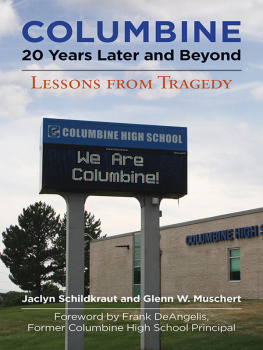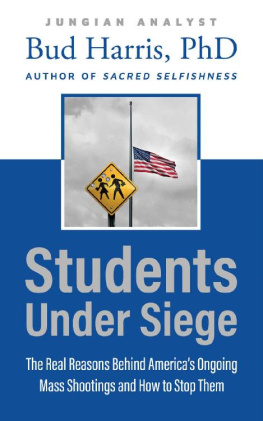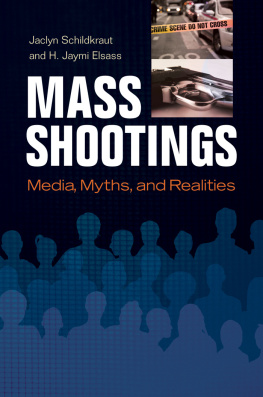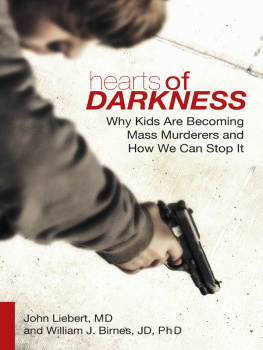Contents
Guide
For Lisa, Charlie, and Eleanor
And for my parents, Joyce and Gary
Contents
Trigger Points is based on reporting and research spanning eight years, including interviews I conducted with more than 150 mental health experts, law enforcement professionals, education leaders, security specialists, and survivors of mass shootings. It is also built on my examination of hundreds of pages of confidential case files from several different threat assessment programs and my firsthand observations of a leading threat assessment team working cases over the course of a year. The book further draws upon a broad range of scientific research, government reports, archival documents, and other public and private materials related to mass attacks and other violence.
In some accounts of threat cases and investigations, I have omitted or altered names and certain other details to protect the identities of the case subjects and some practitioners who agreed to share sensitive private information. I approached this anonymization with the utmost care and deliberation, relying in part on my numerous conversations with experts directly involved in these cases and other leaders in the field. The goal was to maintain the integrity of the narratives and how they illustrate the threat assessment process while safeguarding the privacy and legal rights of the subjects involved. Every specific detail I use in these narratives that is not publicly available is drawn directly from case files and my interviews with threat assessment professionals. Where possible, I have expanded on sourcing or case material of interest in the endnotes.
Throughout the book, I focus to a varying degree on the killers. This is integral to understanding the problem of mass shootings and reflects how the field of behavioral threat assessment itself operates and develops research, including its use of reporting from journalists. However, such focus requires a careful balancing act, weighing the benefits of reporting in the public interest with the importance of avoiding sensationalism and excessive attention on these perpetrators, many of whom seek notoriety through their actions. I include their names and focus on their lives only to the extent that doing so serves to illuminate the prevention of future violence.
Many people remember where they were when they first learned the news on December 14, 2012. I was on vacation and with family at City Museum, an adventure cornucopia for kids built inside a former shoe factory in my hometown of St. Louis. As my wife and I stood watching our nieces, ages four and six, scamper through tunnels and down slides, we also harbored the secret joy of having just learned that we would soon welcome our own first child into the world. My phone buzzed with news alerts and urgent messages. For the previous six months, my work as a journalist had been focused on investigating the recurring problem of mass shootings, but even that familiarity couldnt prepare me for the headline: GUNMAN KILLS 20 SCHOOLCHILDREN IN CONNECTICUT .
The attack at Sandy Hook Elementary School in Newtown, in which six adults also perished, felt like a catastrophic wound opening up in the world. If something like this could happen, nothing was sacred, nowhere safe. I absorbed the news for another moment and then looked around again for my nieces, who were now romping in a colorful ball pit full of other happy kids, most of them around the same age as those twenty first graders.
One incoming call was a request for me to join a rare live broadcast of National Public Radios All Things Considered, to give some context from a mass-shootings database Id been building in my work for Mother Jones. I was soon on the air with NPRs Robert Siegel, whose placid voice Id known since I was just a kid myself, speaking to a mournful and outraged audience of millions. Though Id summoned the resolve, it was hard that day to think about the unfolding event beyond how shattering it was for those Newtown families, a new depth to an endless problem quickly to be framed by the contentious national argument over gun control. Before long, however, I would start to learn of a very different way to look at the daunting phenomenon of mass shootings and what could be done to stop them.
First things first: Guns are not the focus of this book. But before going further, Id like to respectfully offer a few brief words about them. Growing up in the Midwest, I loved the bold thrill and big responsibility of learning riflery and achieving marksmanship. As a professional journalist, I have reported extensively about the impact of gun violence on American society. Personally, I share the view held by a clear majority of Americans, as measured in public opinion polls over the past three decades, that the nations gun regulations are inadequate and should be strengthened. Not all mass murderers use firearms, but the majority doand more than three quarters of those killers acquire their guns legally. Extensive public health research and investigative journalism show that weak regulations correlate with a broad range of gun violence in the United States, from bullet-ridden city neighborhoods to accidental child deaths in suburban homes to suicides in rural towns. Those problems produce far more casualties than the indiscriminate school and workplace mass shootings that so dominate public attention. Study of disparate state laws has made clear that stricter gun regulations would help diminish an overall national toll of nearly 40,000 shooting deaths and 115,000 injuries annually.
Even so, the scope of the mass shootings problem is larger and more complex than its tool of destruction. With this book, my aim is to leave behind the battle over gun laws and instead tell the story of an additional solution to the affliction of mass shootings, one with powerful potential to reduce harm. Its focus is on the intricacy and possibilities of human behavior.
I first began to learn about the field of behavioral threat assessment in 2013, about a year after turning my attention to a spate of gun rampages and working with colleagues at Mother Jones to build a database we called A Guide to Mass Shootings in America. After the July 2012 massacre at a movie theater in Aurora, Colorado, Id been startled to find that virtually no data were available on this particular type of attack, whether from government agencies, academic researchers, policy groups, or news organizations. No one had put forth a comprehensive, detailed set of cases, let alone any in-depth analysis of the problem. The void was owed in no small part to a political chill dating from the mid-1990s, when the National Rifle Association and its allies in Congress orchestrated a de facto prohibition of federal funding for gun-violence research. An additional factor was likely the challenge of defining a mass shooting, which, historically, was a matter of loose consensus among criminologists and FBI experts: an attack by a lone assailant in a public place, with an arbitrary baseline of four or more victims killed. Excluding attacks with conventional motives like robbery or gang violence, I worked with my team to assemble a first-of-its-kind online database detailing dozens of cases in the United States going back three decades. The frequency with which it required updating in the following months, and years, was sobering.
Beyond documenting the legal provenance of most mass shooters guns, my initial analysis of cases revealed that more than half of the killers ended their attacks in suicide. I grew aware of another stark pattern. Details from news reports, court and police records, and my interviews with experts made clear that many of the perpetrators had acted in worrisome or disruptive ways prior to attacking, often for a long time. These had been potentially lifesaving warning signs, and yet the saturation of news coverage following mass shootings almost always told a different story, routinely quoting people who knew or had come in contact with the killers and expressed utter surprise in the aftermath: I never imagined hed do something like this or Nobody could have seen this coming. Evidence from dozens of cases suggested those perceptions were mistaken.



